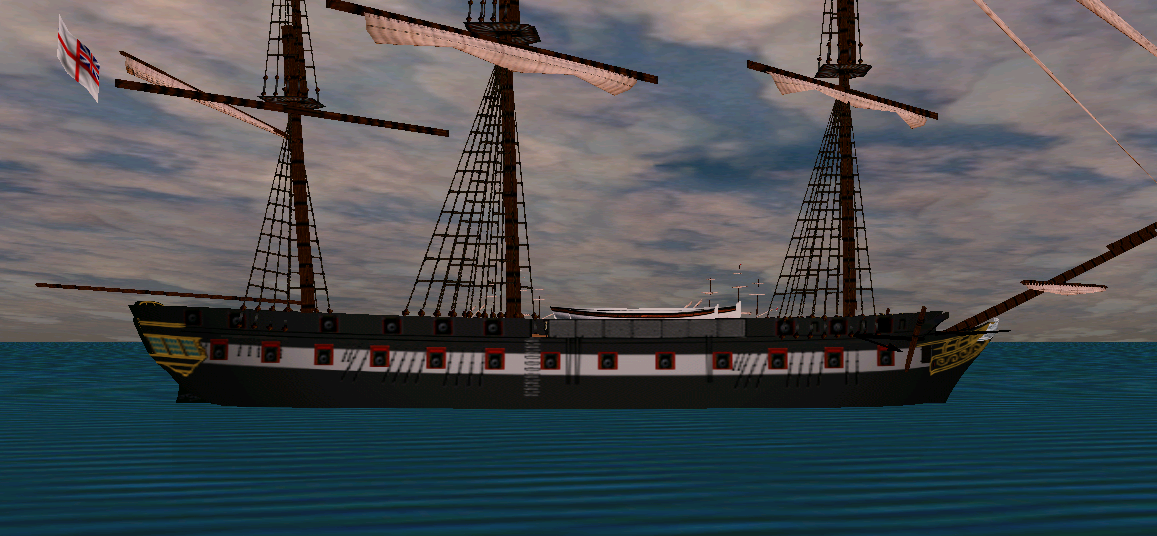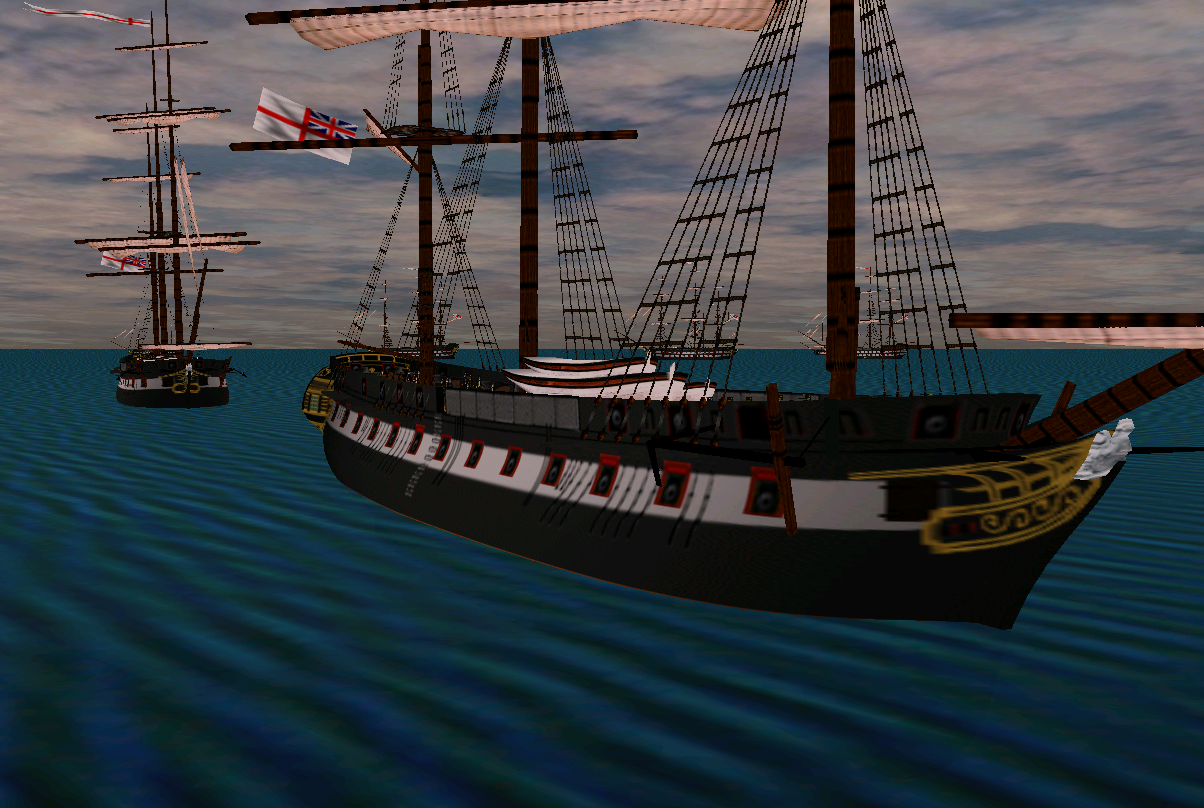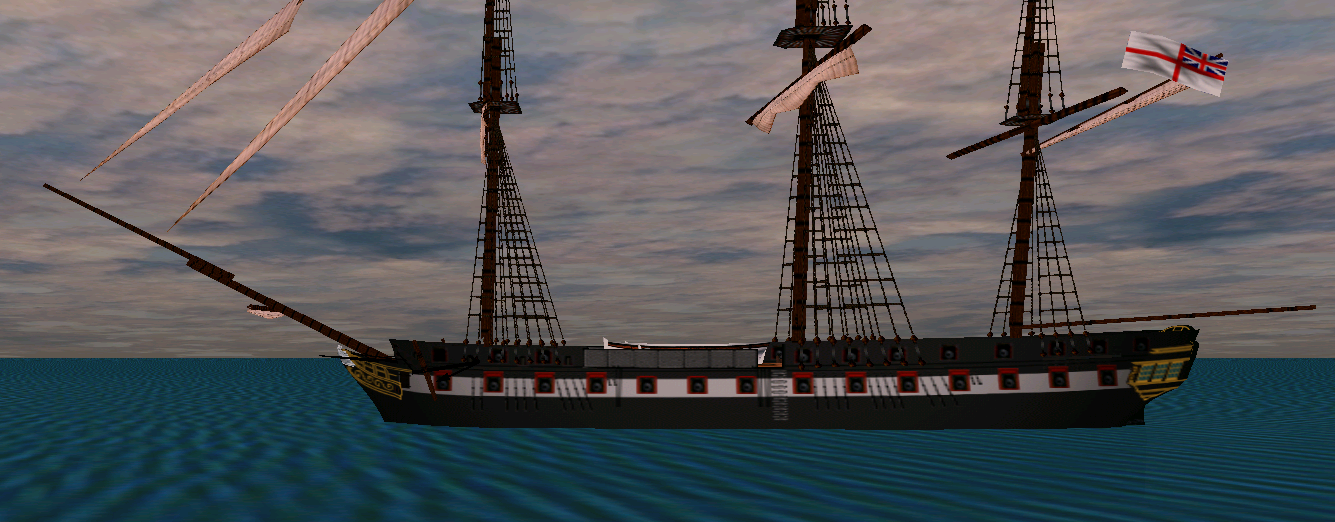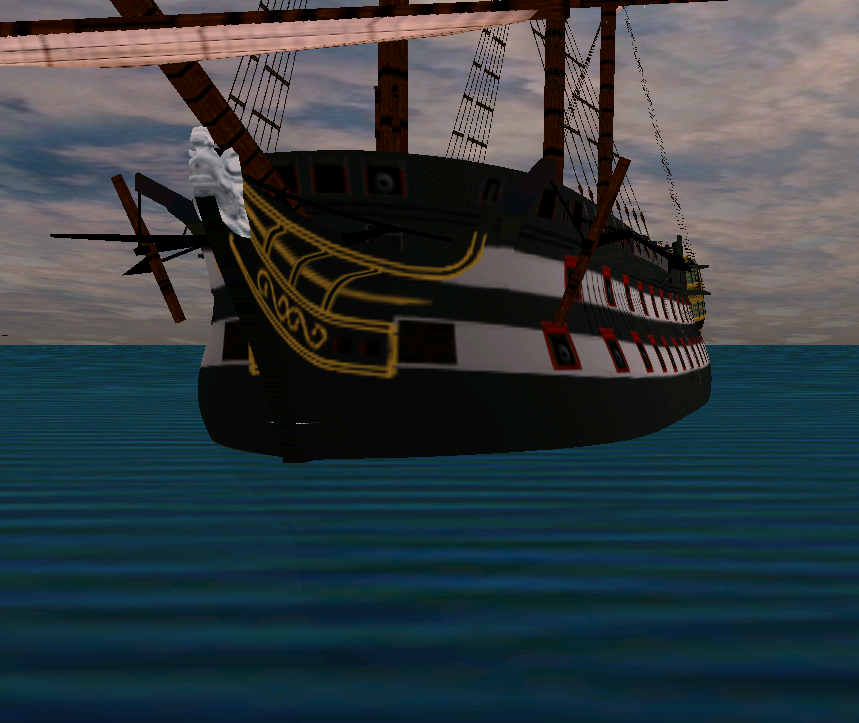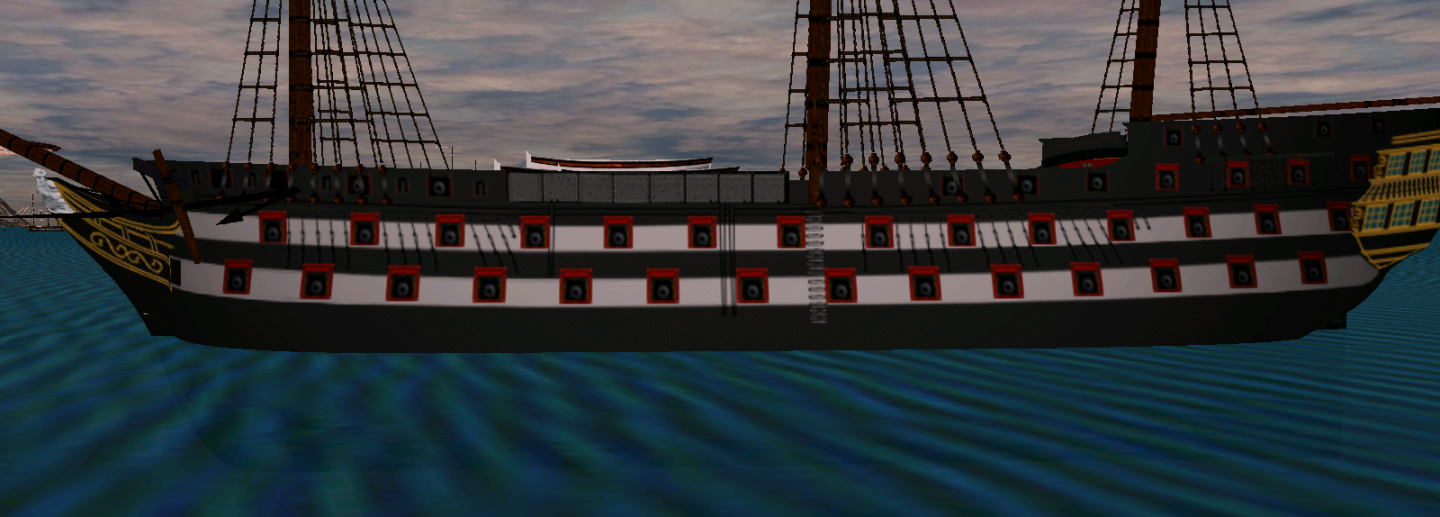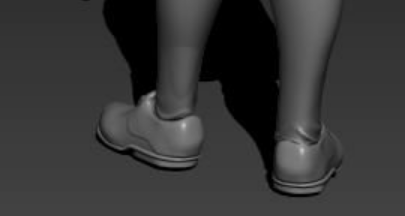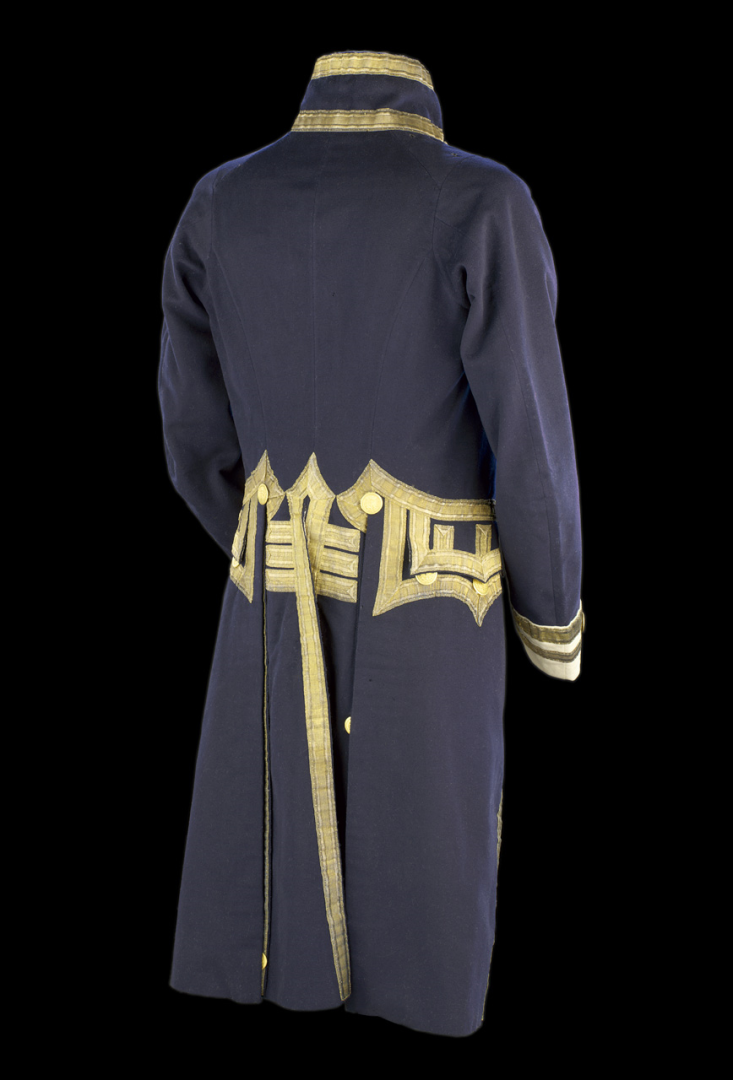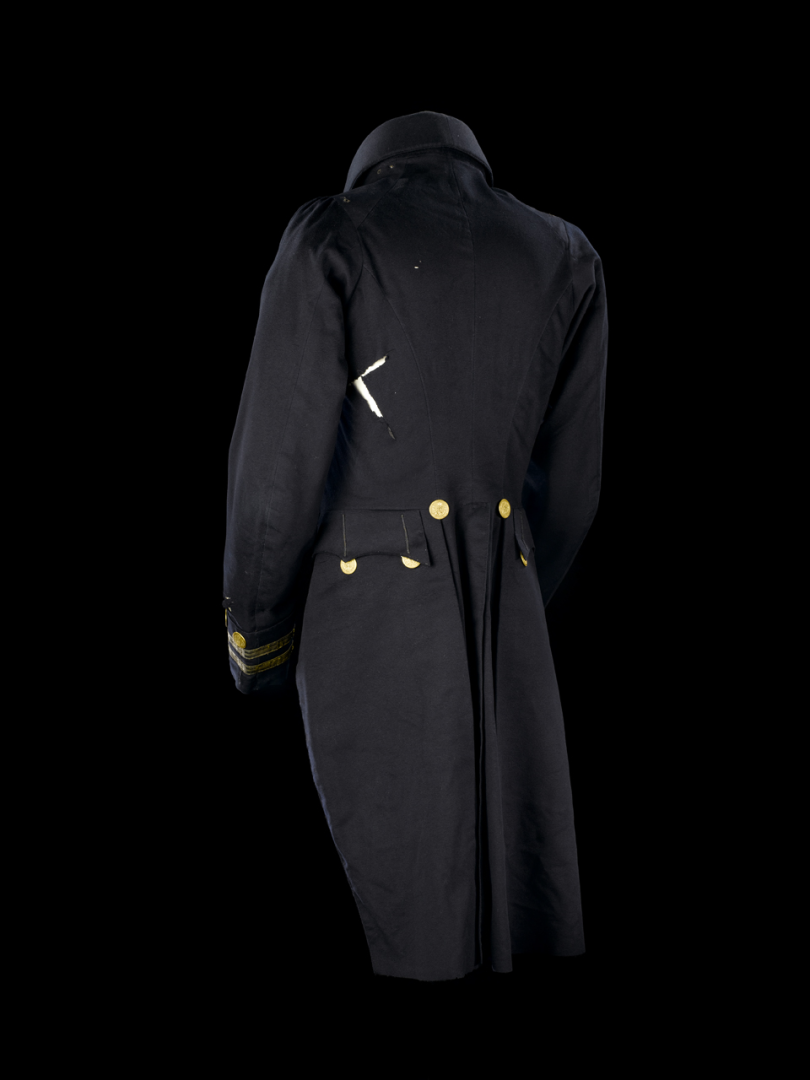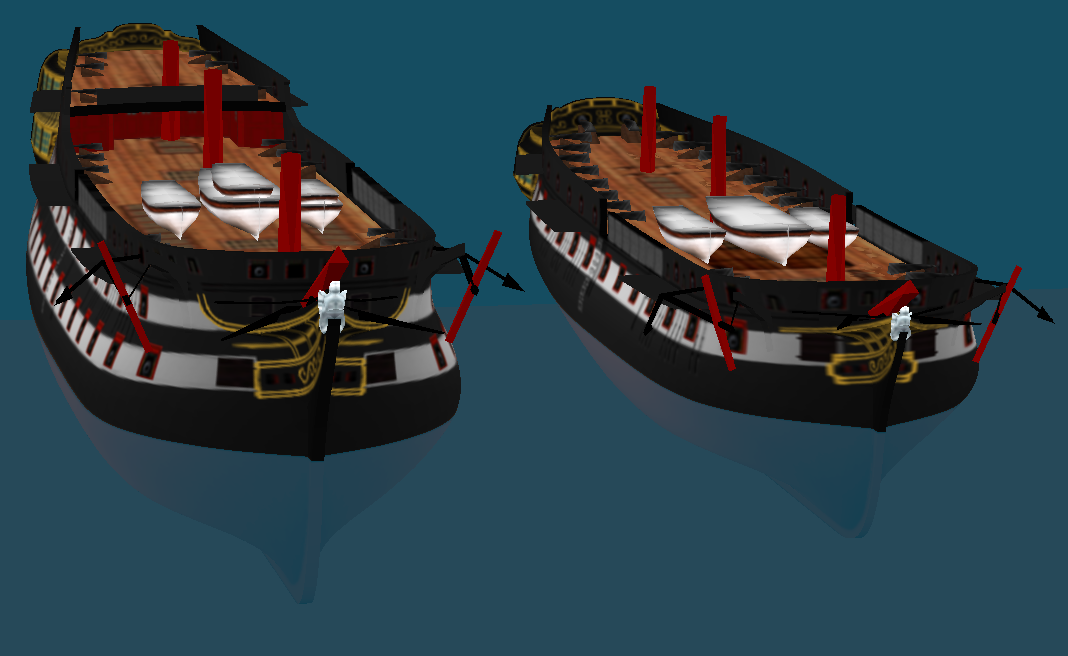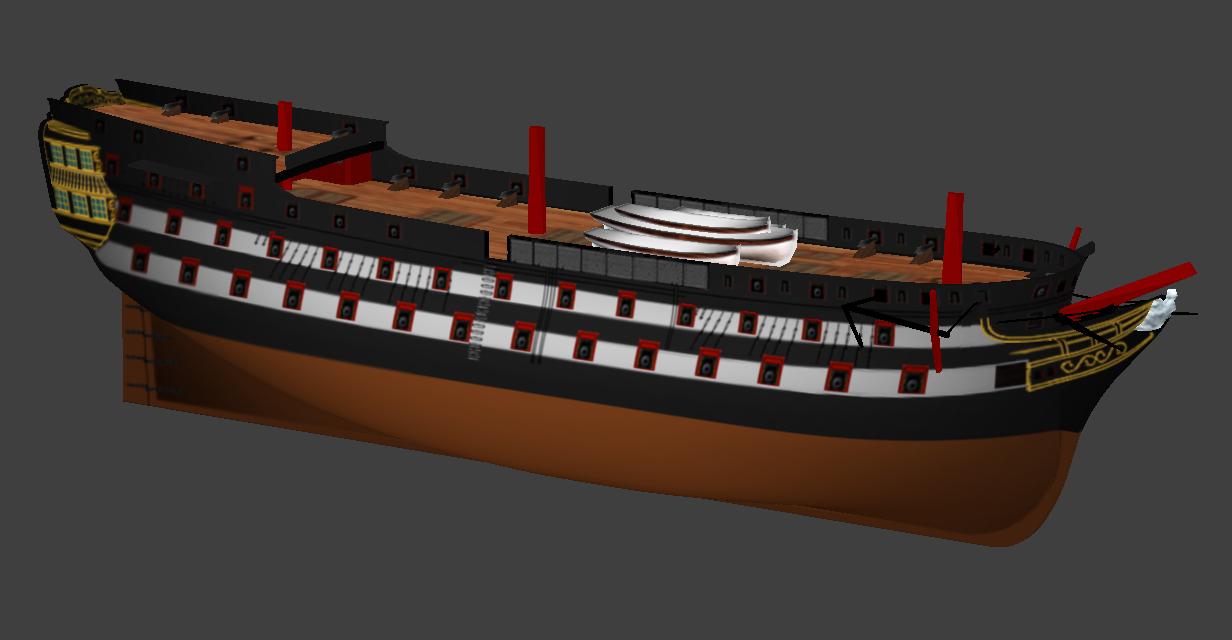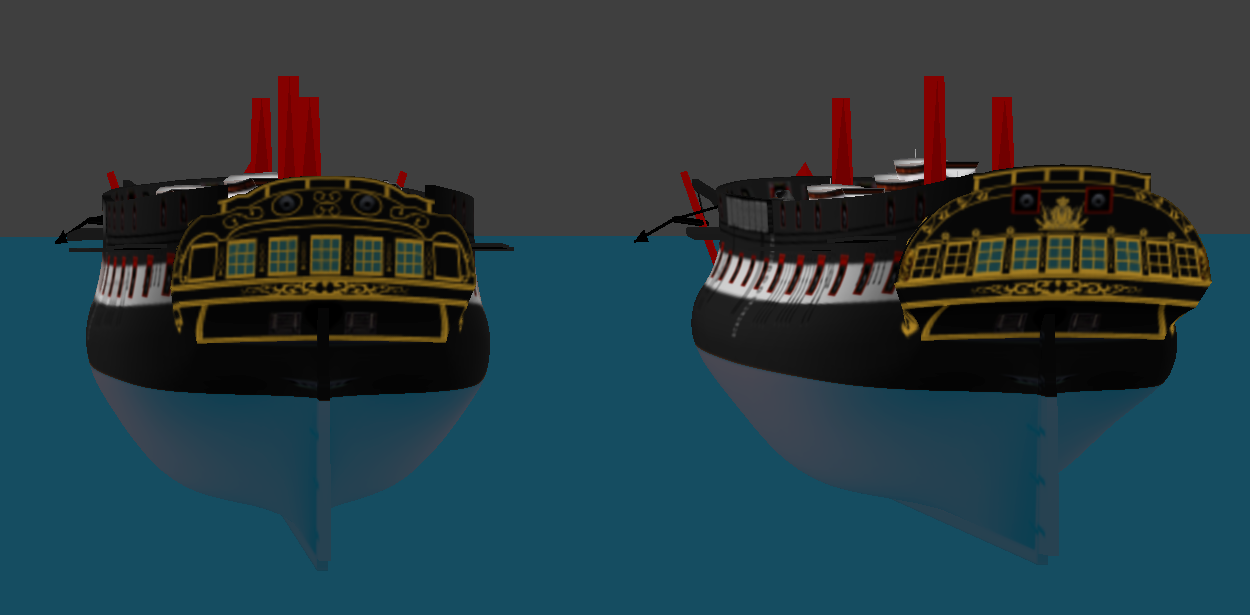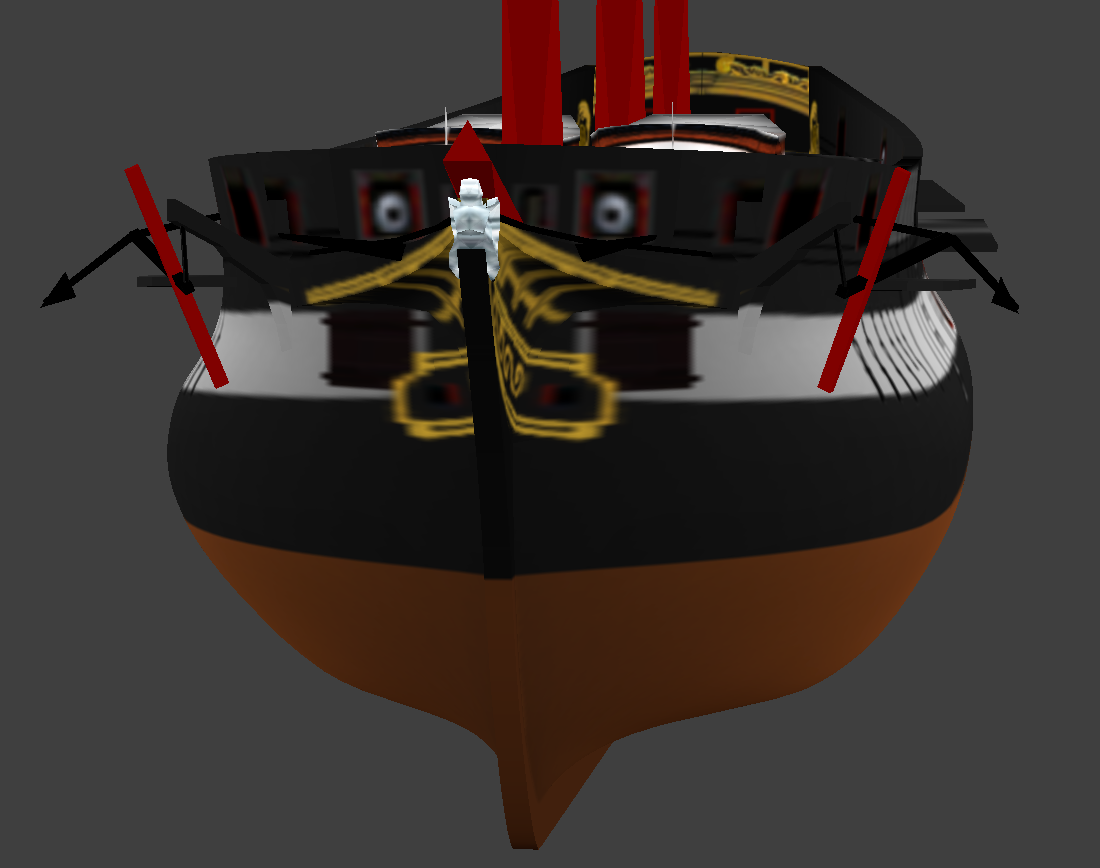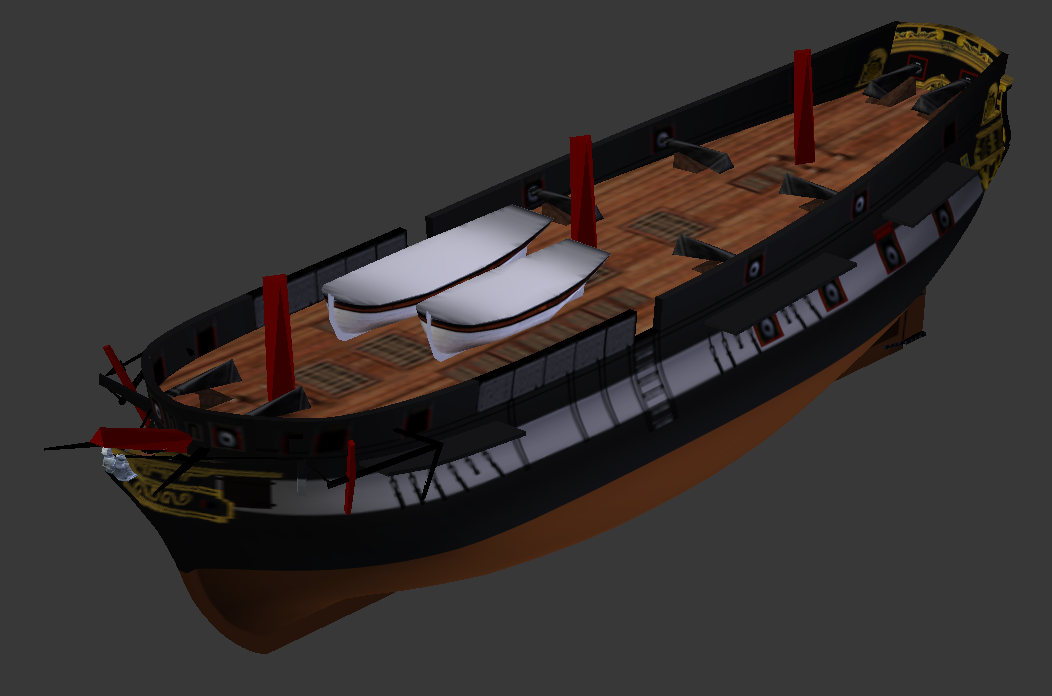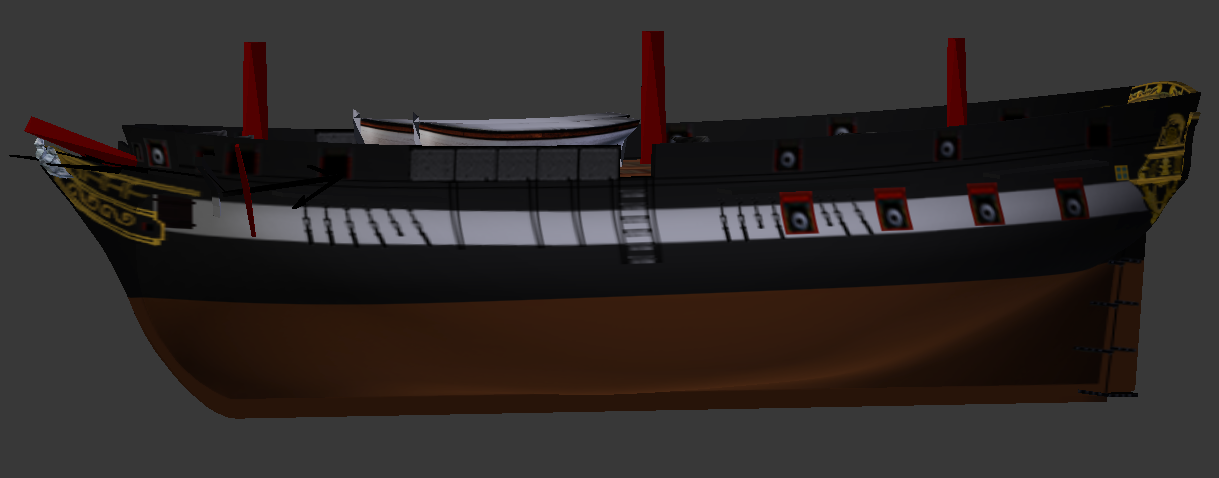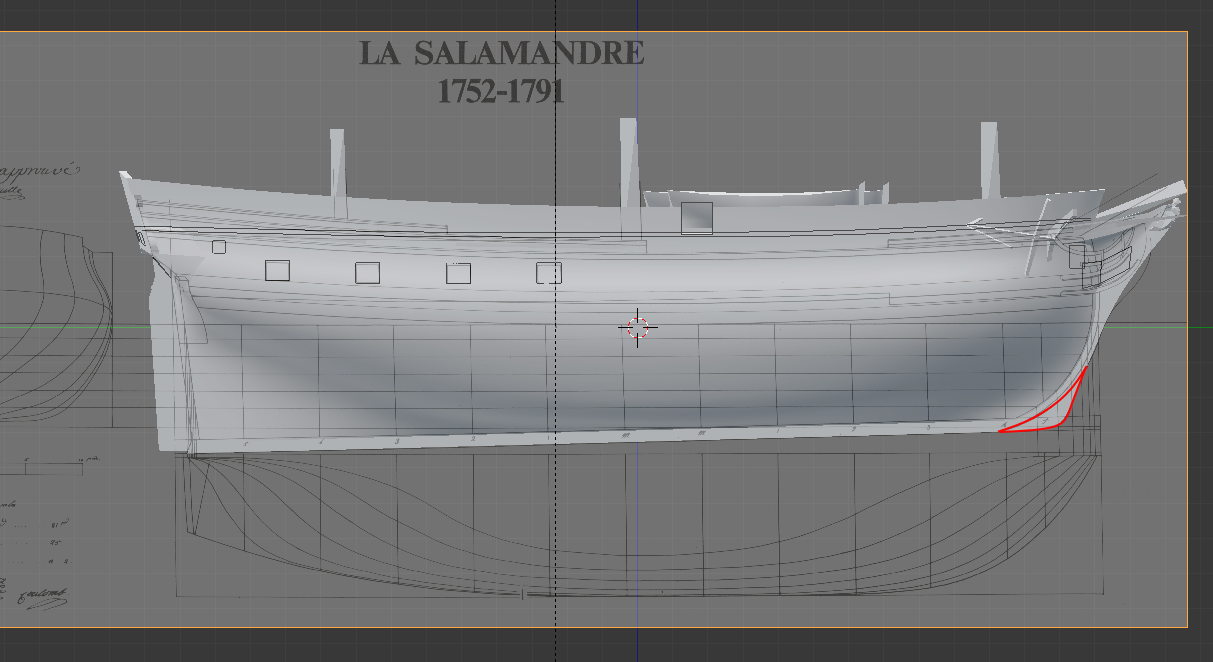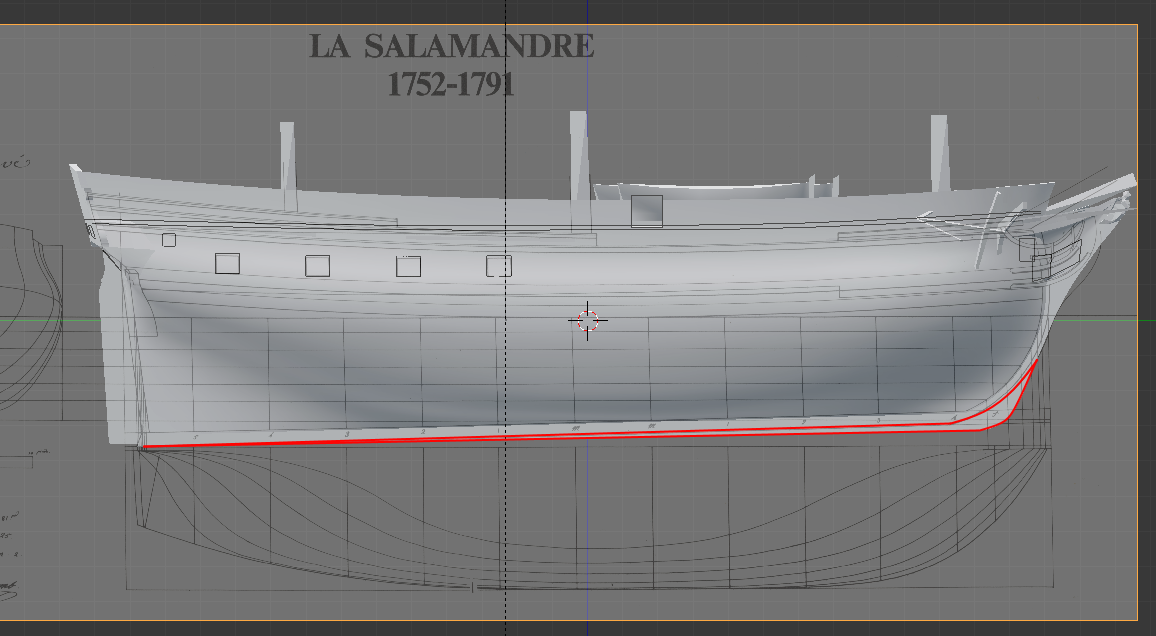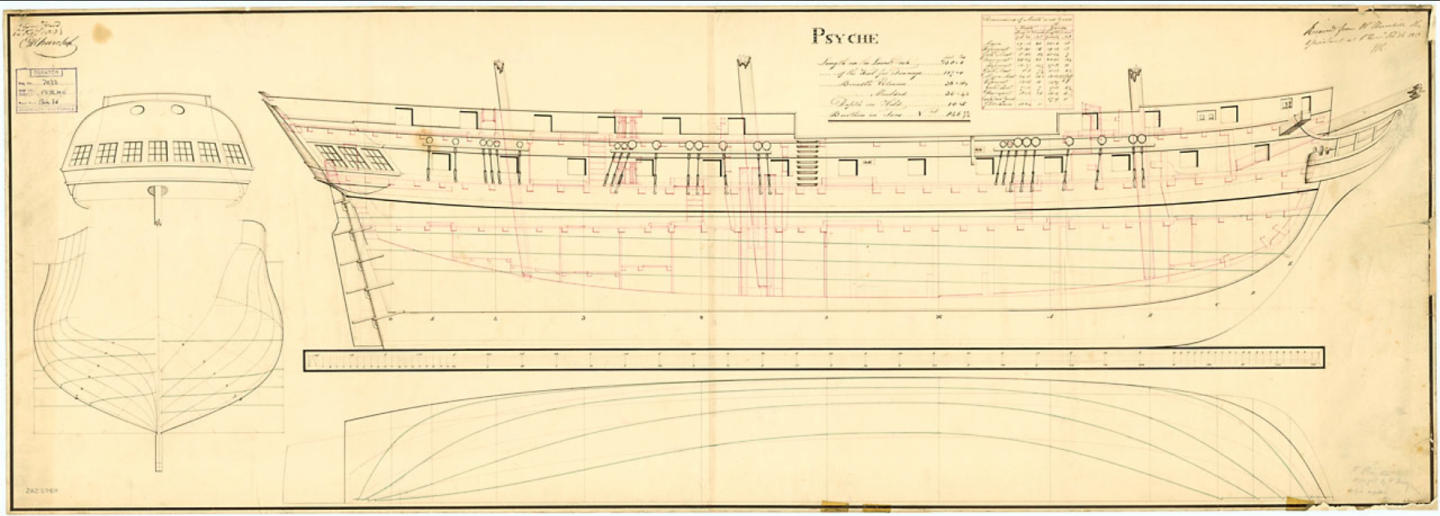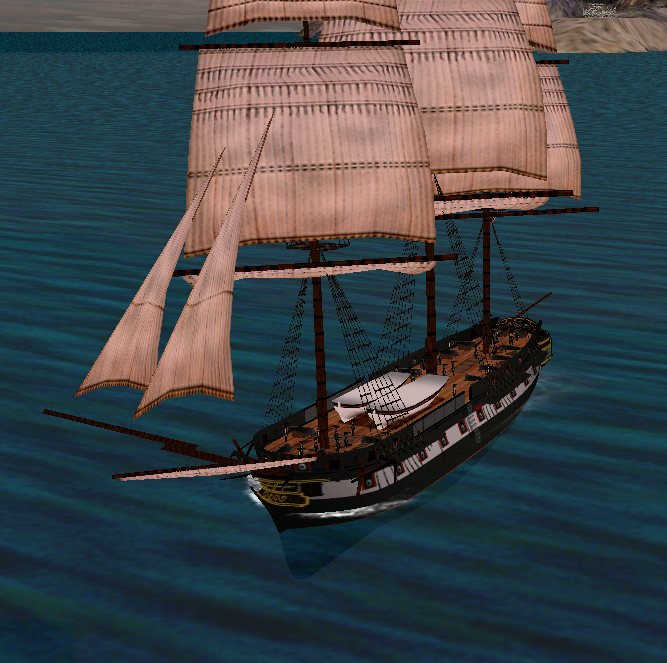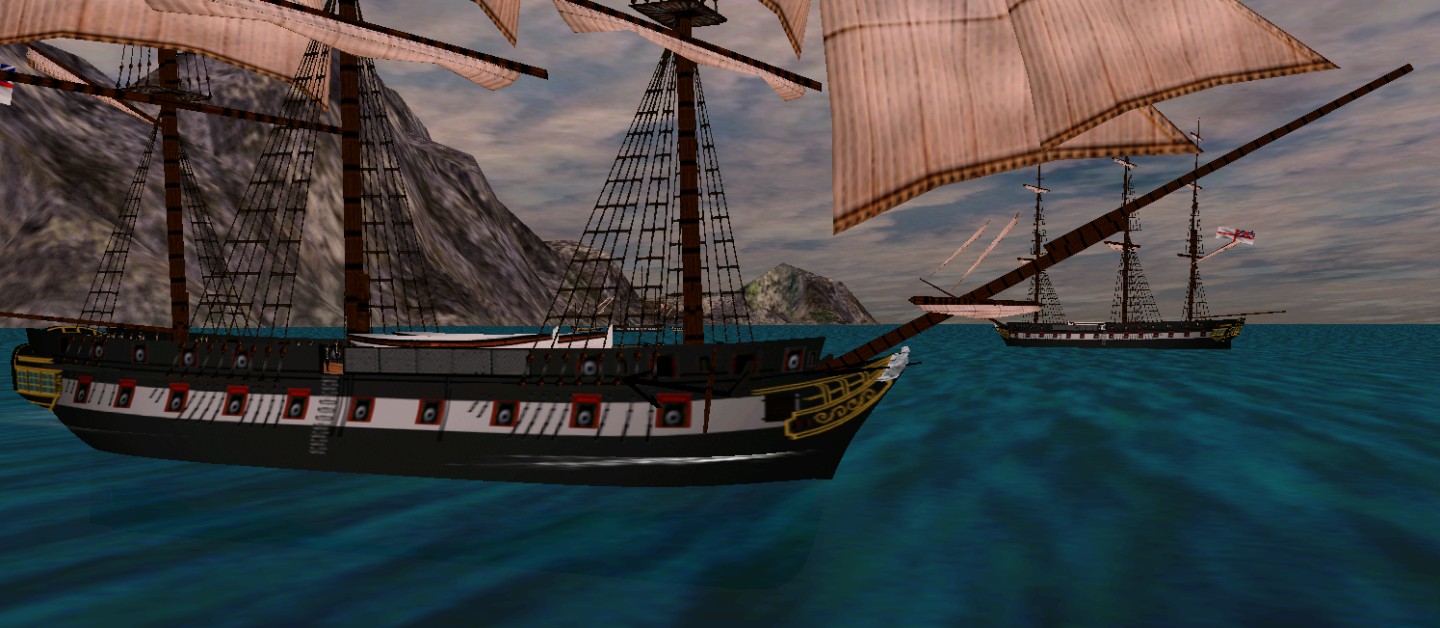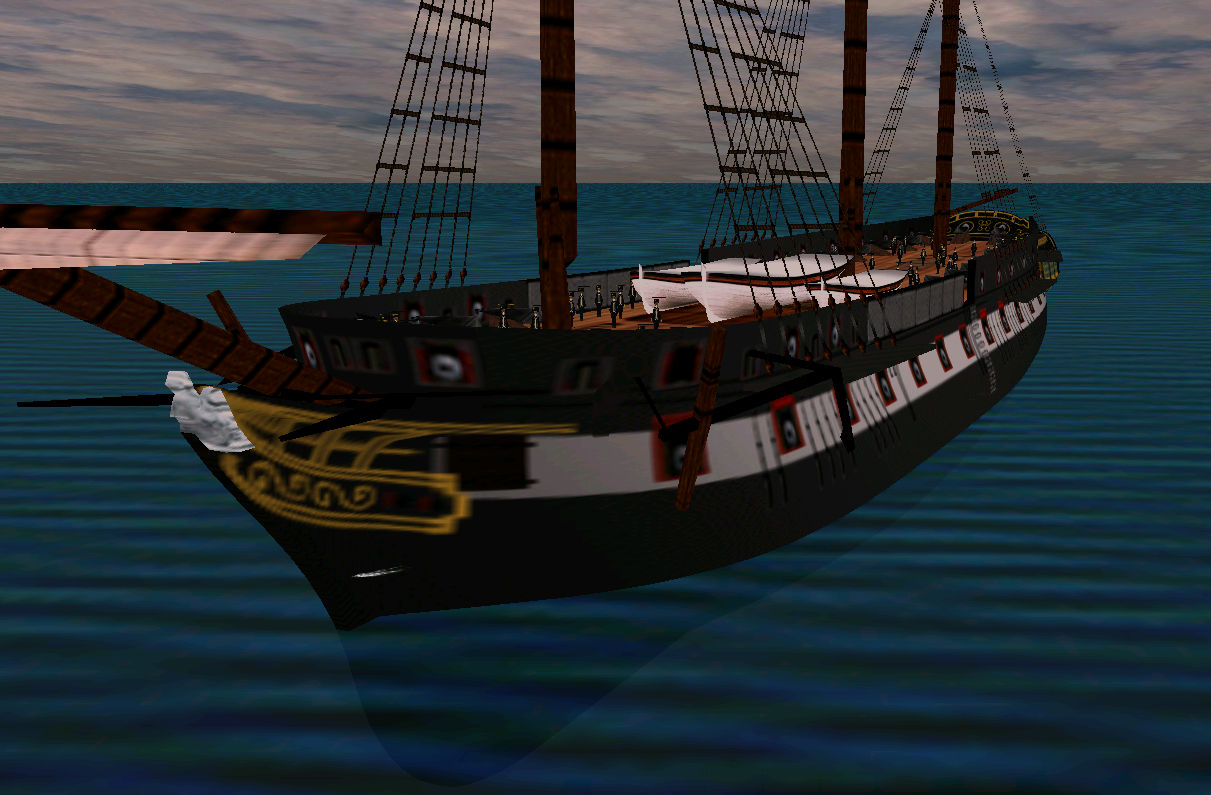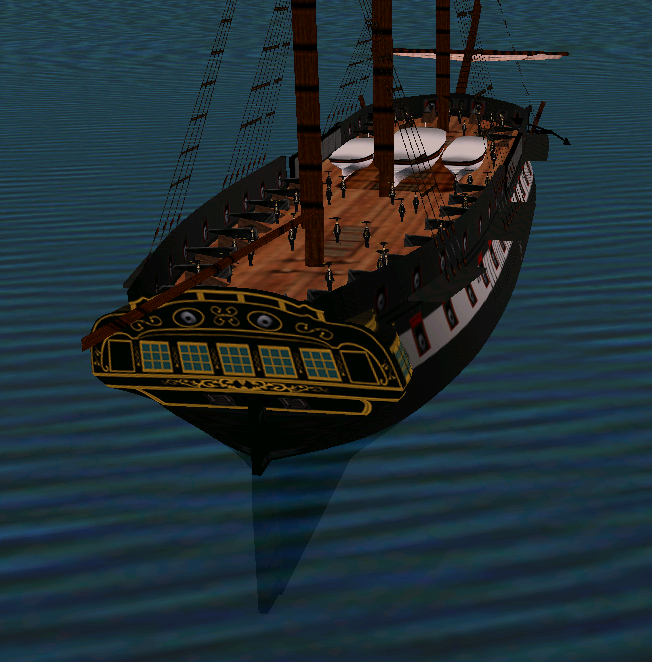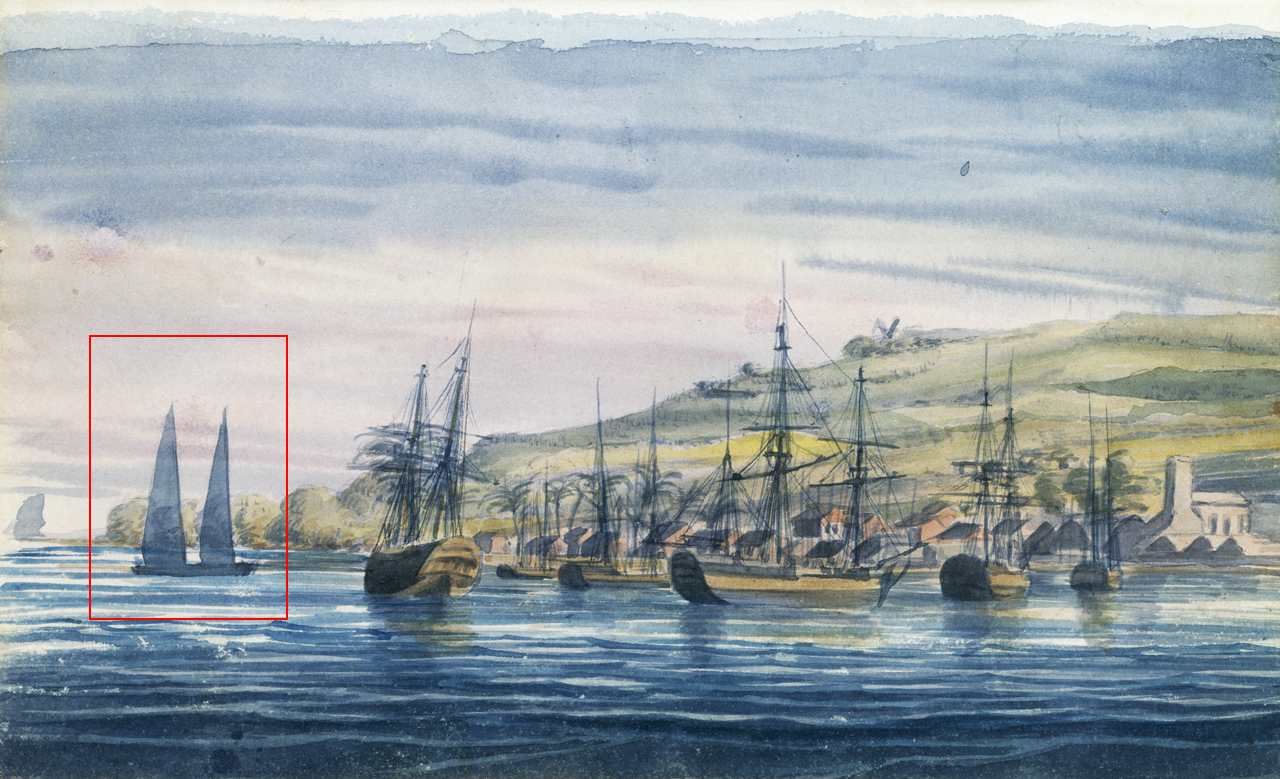-
Posts
981 -
Joined
Content Type
Profiles
Forums
Gallery
Events
Everything posted by Martes
-
Absolutely unique views of ships that survived into the 20-th century and got on film. Hindustan: Implacable: The sinking of Implacable - note her behavior on open water: Conway ex-Nile: Worcester: Victory in 1925:
-
There are a lot of figures of comparable sizes that take all the details and forms into account. Type "Napoleonic officer 1:64" into google images. There are correctly styled naval figures, and you won't believe what people do with hussar uniforms Even Hornblower figurine made by the same author is all right. But Hornblower stands straight, and this pose is more complex. The problem here is not seams or buttons (although if the sculptor did know about them, it would really help), but loss of overall shape. I am guessing that the author tried to emulate the cloth when changing the pose of the character the cloth behaved incorrectly due to error in rigidity parameters. From technical standpoint it is a bug, and it is (probably) not very difficult to fix.
-
That's "flap" and "breeches" in this case. And their shoes are somewhat too modern. The coats are double-breasted with epaulettes, that puts the timeframe around after 1805, so most likely they should wear half-boots with long trousers, but if we suppose very high-end dress ensemble, the shoes looked differently then and had higher heels and much more prominent buckles. The question is how real you want to make it.
-
Maybe I am a bit late here, but the coat definitely appears very ill-fitted from behind: The material appears too thin, following all the body shapes inside (which it shouldn't, broadcloth tends to keep it's own form), and there is no trace of tailoring. The thing is that the back of the coat is composed of several parts with quite rigid seams that ensure that the depicted problem does not happen. References: https://www.rmg.co.uk/collections/objects/rmgc-object-71256 https://www.rmg.co.uk/collections/objects/rmgc-object-71336 https://www.rmg.co.uk/collections/objects/rmgc-object-71607 https://www.rmg.co.uk/collections/objects/rmgc-object-71431
-
And if I am going to go over all the models and blacken the guns, I could, as well, fix a couple of other issues. The gunports on the open decks of the large ships were, unlike the frigates, painted bright red, and retrospectively that was a bad idea. So now I made them darker except the ones that should have lids because they are located inside a roundhouse:
-
Something I haven't noticed for a long time, and a somewhat painful stylistic decision. The guns, generally, were painted black and should not appear as bright metallic muzzles. Stylistic, because there are many paintings that have it either way. And painful, because it looks I will have to go over all the ships and darken them, just like I darkened the gun emplacement texture. But after a thorough consideration, it does look better.
-
To illustrate one of the small design decisions I had to make in the process of working on La Salamandre - remember, I said from the beginning I am going to modernize her to fit the style of ~1810: After a series of versions I settled on a single hawsehole on each cheek forward instead of the usual double set. This configuration is common to late/post-napoleonic head designs for small ships and keeping in mind that on the original the cables were worked through the forecastle railing, this leaves enough place for pleasantly and proportionally looking chase ports. And yes, this implies the internal arrangement is also somewhat different from the original, with flush deck and non-isolated forecastle, different arrangement of the capstans, etc. So now I have to finalize the decorations and make the mortar with it's well for the bombardment state. What remains here is settling the framing around the royal arms (I like the current version, but on decoration design plan it is different and I am not completely sure which I like better) making background panels on the counter, and then join and polish all the different parts from which the decoration set is assembled.
-
Free CAD program
Martes replied to Frank Burroughs's topic in CAD and 3D Modelling/Drafting Plans with Software
@Frank Burroughs, it all very much depends what do you need the tool for. Blender and similar tools (Maya, 3DMax, etc) are suited creating computer game models and 3D printing, and, while everything they produces may look very pretty, it would never be exact, because down under it is still a polygonal extrapolation consisting of vertices connected with triangular faces. Various CAD software, on the other hand, can produce geometrically exact shapes. However, if you want to 3D print it afterwards, the model will still have to be converted to polygonal extrapolation, but the programs do that more or less automatically. The techniques of working with them are entirely different and require separate learning curves. -
Thanks, Gerard! So do I understand correctly: - when such a report was submitted, with a captain's request of adding a false keel because the ship is leewardly, the (Toulon) dockyard would most probably simply add ~15 cm parallel to the existing keel, and be done with it? - if the design was, for any reason, repeated a decade or two later, this additional false keel would be included, but the underwater shape of the cutwater forward would essentially remain the same?
-
Concerning the Salamandre, I asked a friend who knows French much better than myself to translate the handwritten report that is present in the book. And I was very surprised with the result. I half expected it to be very similar to the one for Etna I posted above, but... Which he translated as: The question (primarily for @G. Delacroix ) is therefore, how to add a correct false keel and gripe per French practice. The ship has relatively pronounced inclination aft, so adding a full false keel that is parallel to the original would increase the draft, which I am not sure would have been welcome. Tentatively, I looked at several contemporary ships after British refits (Embuscade, Unicorn series, which were copies of the privateer Tygre, the corvette Cygnet, ex-Guirlande), which usually did not extend the keel, but added a very dinstinctive gripe, and did the same: Another way I thought of was adding a triangular false keel that wouldn't increase the draught aft, but increase to certain degree the draught forward. And then there is always a possibility to add a full false keel similar to the Psyche, but at a cost of increasing overall draught: What would be the most correct here?
-
It is a point. The way I see it, she's about the size of the ships in the foreground, ~100 feet in length, and with comparable mast height. One of the first images google gives, of course I've seen it. But it's not comparable to the size of the depicted ship, nor the rig is close to proportion.
-
Thanks, I saw those small and early ones. What I am looking for are any depictions of very tall, modern-looking, schooners with gaffless triangular sails that can be with any confidence dated between 1750 and 1840.
-
Unfortunately, there is nothing decisive there as well. The examples given in the book show either small gaff, or divided sail, or sliding gunter (featured on Preble's gunboat), which is still separate from the mast. That's the closest, but still not that.
-
Thanks, I checked those books. Unfortunately, there is no indication for similar ships, again, before mid-19th century. Every example before features at least a small gaff above, or the sail is actually divided to two.
-
First of all, it is a watercolor, indeed, hence the transparency. And second I think I was misunderstood a little. It wasn't a question of what this rig is. And I didn't even say it's impossible to have at the time, but just extremely rare and therefore worth a bit of exploration. What I was interested in are any additional documentation or depictions of this exact type of Bermudan schooners earlier than 1830, because I can't find any. Especially with this ratio of ship length to height of the masts. And yes, it was a joke about the time traveling, but still, the ship that we see differs from even from the Bermuda schooner in the third post, having considerably longer masts for shorter hull, and implying a very different hull form with an extended keel.
-
There are, unfortunately, very little depictions of ships with this kind of rig from 18th or early 19th century. This is dated 1843 and it's the earliest I could find, with earlier images being closer to this: Continuous triangular sails are extremely rare. I don't say it's impossible, but very curious nevertheless. Also note the height of the masts and the sails on the original image.
-
https://www.rmg.co.uk/collections/objects/rmgc-object-103243 View of Bridgtown and part of Carlisle bay in the Island of Barbadoes by Captain Edward Pelham Brenton, circa 1820 Was this type of rig already used? Because otherwise it looks kind of like a modern yacht
About us
Modelshipworld - Advancing Ship Modeling through Research
SSL Secured
Your security is important for us so this Website is SSL-Secured
NRG Mailing Address
Nautical Research Guild
237 South Lincoln Street
Westmont IL, 60559-1917
Model Ship World ® and the MSW logo are Registered Trademarks, and belong to the Nautical Research Guild (United States Patent and Trademark Office: No. 6,929,264 & No. 6,929,274, registered Dec. 20, 2022)
Helpful Links
About the NRG
If you enjoy building ship models that are historically accurate as well as beautiful, then The Nautical Research Guild (NRG) is just right for you.
The Guild is a non-profit educational organization whose mission is to “Advance Ship Modeling Through Research”. We provide support to our members in their efforts to raise the quality of their model ships.
The Nautical Research Guild has published our world-renowned quarterly magazine, The Nautical Research Journal, since 1955. The pages of the Journal are full of articles by accomplished ship modelers who show you how they create those exquisite details on their models, and by maritime historians who show you the correct details to build. The Journal is available in both print and digital editions. Go to the NRG web site (www.thenrg.org) to download a complimentary digital copy of the Journal. The NRG also publishes plan sets, books and compilations of back issues of the Journal and the former Ships in Scale and Model Ship Builder magazines.





